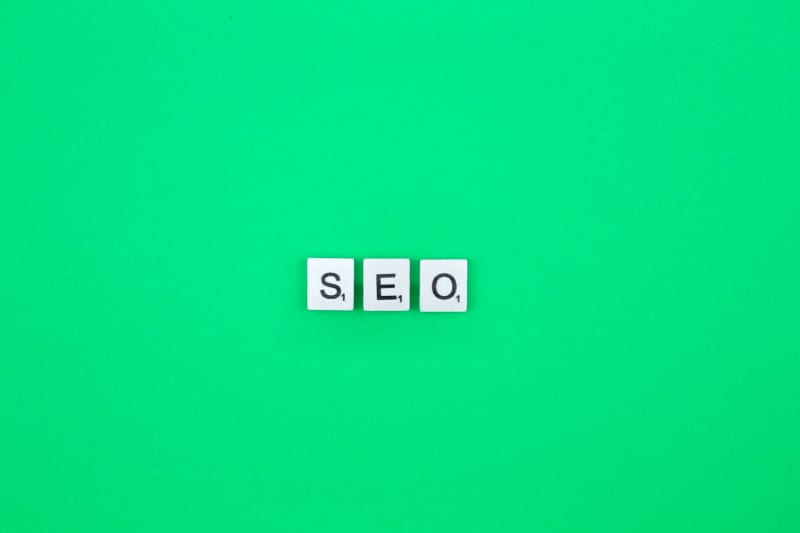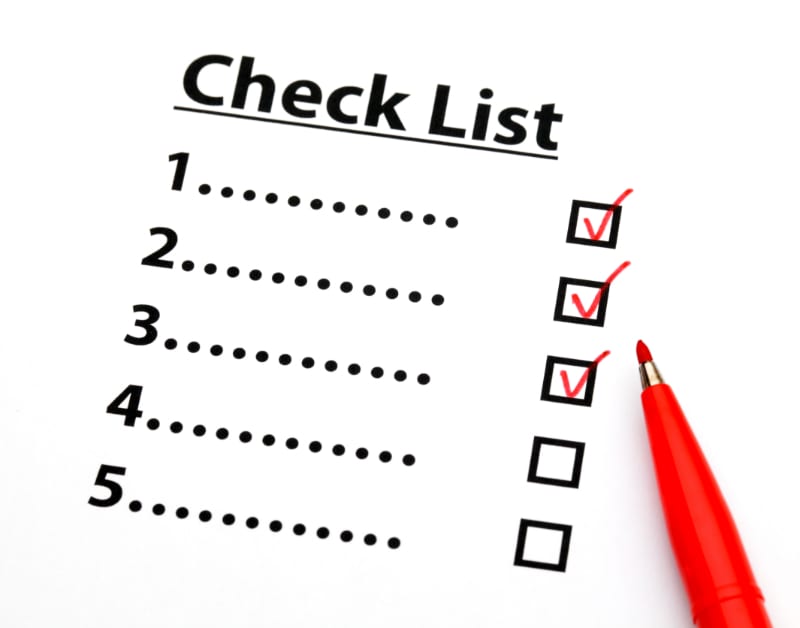There are so many types of SEO these days that it can be a bit daunting to sift through all the information in order to find what you were looking for. One essential type of search engine optimization is on-page SEO. But what is it for? On-page SEO is the practice of optimizing individual pages and blog posts to better show up in search results. Additionally, on-page refers to both the content visible on the page and the HTML source code of a page. By properly implementing on-page SEO, you help search engines better rank, understand, and recognize your content. Instead of jumping into the deep end, learn how to optimize your pages with our on-page SEO checklist.

Table of Contents
On-Page SEO Checklist
Following an on-page SEO checklist is an easy way to both learn about on-page SEO and better implement it into your site. However, it’s essential to know a little bit about how on-page SEO works to understand the checklist best.
On-Page SEO Basics
We already know that on-page SEO is essentially the practice of optimizing your web page content for both search engines and users. That said, there’s a bit more to it.
On-page SEO differentiates itself from what is known as off-page SEO, which refers to linking and signals to your site. So, why does it matter? On-page SEO is one of your best chances of getting people to click on your page.
Here’s how Google explains its importance: “The most basic signal that information is relevant is when a web page contains the same keywords as your search query. If those keywords appear on the page, or if they appear in the headings or body of the text, the information is more likely to be relevant.”
This explanation is basically saying that when you implement proper on-page SEO tactics such as using keywords that your audience is searching for, you come off as more reliable and authoritative. Search engines like Google look for those matching pages and keywords and rank them higher.
All that said, there’s a lot more to on-page SEO than cramming the “right” keywords into your article. In fact, doing that will likely hurt you. For your content to rank, you need to optimize your content. Factors you should be paying attention to include user experience, bounce and dwell rate, search intent, page loading speed, and click-through rate.

On-Page SEO
There are many areas to focus on when it comes to on-page SEO. However, the most important one is the content on your page and what you do with it.
If you’re new to SEO, sticking to the basics is a great way to get started. If you’re experienced, going back to the basics may just provide the refresh your site needs. So, here’s a mini SEO checklist to follow when it comes to making sure you’re doing the most you can for your page.
SEO Content Checklist
- Title
- Titles are critical for gaining search engine traffic. They’re the first thing a user reads, and an engaging title that promises to answer a question will increase your page’s click-through-rate.
- URL
- We often ignore URLs because they tend to get quite long. However, a concise, easy to read URL is vital for Google and readers. Additionally, your URL is a perfect place for a keyword.
- Meta Description
- Similar to your URL, your meta description is a real value player. This is the area where you describe what a reader will find on your page. A concise meta description using a keyword will help you rank higher in the SERP.
- Keywords and Related Words
- Implementing your keywords and similarly related words into your page does two main things: it tells Google that this page is about the searcher’s query, as it has the same keywords. And it tells the reader the same thing, that this page is a reliable source.
- Header Tags
- Clear headings like H1, H2, and H3 tags that use your chosen keyword or keywords are a great way to increase your ranking power. Headings are easy to read on a page and easy for Google to crawl. Like your title, a well-written heading is informative, engaging, and promises to answer a question.

SEO Checklist
Now that we have some of the basics down let’s get to our on-page SEO checklist. Here, you’ll find everything from simple tactics to tools you can use.
- Perform keyword research
On-page SEO really begins with finding the best keywords for your page. There are several ways to do this, from using Google’s autofill and “Other people ask” section to paid services that track keywords. However, you should be looking for keywords that:
- Is relevant to your content and theme
- It is realistically a keyword that you can rank for
- Answers a query of some sort
- Make a content plan
With your chosen keyword or keywords ready to go, it’s time to make a content plan. Here, you’ll develop how to structure your article using your keywords. You’ll want to plan out the various parts of your page and the content you’ll include. Remember, your page is here to help a searcher answer a question.
- Does my title include my keyword?
As we discussed above, your title needs to attract both the search engines and your audience. A great title includes your keyword while promising a solution.
- Do my tags use my keywords, and do they make sense?
Using headline tags are helpful for several reasons. They break up your article into something easily scannable, are excellent methods for increasing your rank in the SERP, and give more context to your page.
- Is my content original?
This is a bit of a tricky one. Obviously, when writing about specific topics such as on-page SEO, there will be a lot of results. However, all these pages, which are roughly about the same topic, can’t all be wholly original. After all, we’re talking about the same subject.
That said, original and unique content means more than providing the same general information as someone else. If done correctly, unique content means that it’s not copied from anywhere else (plagiarized), isn’t found anywhere else on your own site, or republished on someone else’s, and uses your keywords in a way separate from the competition.
- Is my content scannable?
Scannable content means that a reader can easily read and digest all the information on your page. While this practice doesn’t help much when it comes to ranking directly, it helps indirectly.
An easily scannable page means that readers are more likely to click on it and stay on it for longer. And by attracting more readers who stay longer, you tell Google that your page has value. Which, in turn, helps your ranking ability.
- Does my page have valuable internal and external links?
Page linking is a valuable tactic when trying to rank higher. Internal links that take the reader to other pages on your site give both your page and site more credibility. Likewise, external links linked to other sites can add value, especially if that site links back to you.
- How is my content length?
Content length is a huge topic of discussion, and you’ll find a variety of opinions. Sometimes people want less content and a quick answer; sometimes, people are looking for a longer and fleshed out explanation.
However, most agree that your content should be long enough to give the reader what they were looking for, but not so long that you start to provide information that isn’t valuable. In general, your page should have at least 300 words to be considered credible by Google.
- Do I have video/images?
Images and videos are effortless ways to add value and authority to your page. Remember that on-page SEO refers to your page’s main content and additional content like meta tags and URLs.
Images and videos work in a similar way. When you add an image to your page, you have the opportunity to give it a descriptive file name and an alt-tag. Both allow you to include your keyword one more time. Your alt tag provides a text alternative to your image, meaning that when Google crawls your page, it will read your alt-tag instead of seeing your image. A useful alt tag will help your page rank.
- What about my URL and meta description?
Now that you’ve written your article or page, you know everything your page covers, meaning that you can create quality URLs and meta descriptions to give your page one last boost.

On-Page Optimization Checklist
Now that we know what on-page SEO is and how to use it to our advantage, there’s one final thing to do before publishing your page. Make sure your page is optimized for the search engines.
- Count your keywords
Keyword density is important, and you want to make sure that your keyword usage is well balanced throughout your page. While putting in your keyword too few times can harm you, the same goes for adding it too many.
- Double-check media
Before publishing, you want to make sure your images and videos are embedded correctly and have the appropriate descriptions and alt tags.
- Check scannability
Ranking high in the SERP is equally about your page’s structure and the quality of its content. Read through your article as if you were your audience. Does it make sense? Is it easy to read? Does it answer my question?
- Rewrite your meta description one more time
Your meta description is extremely valuable, both for crawling and readers. It’s the section of text you see under the title in the search engine. Make sure it’s concise and informative while using your keyword.
- Make sure your links work
Finally, double-check your links. Broken links won’t do you any favors.

FAQs About Our On-Page SEO Checklist:
- What is on-page SEO?
- What is off-page SEO?
- How do I rank higher?
- What do I need for on-page SEO?
- How do I optimize my content?


Contact Us Today!